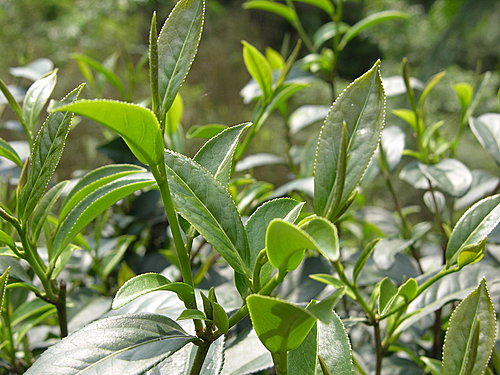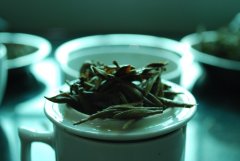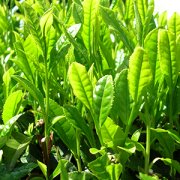What are the best and most popular types of tea in China?
Tea is made from a plant called Camellia. But as you know, it is further classified into various types, such as Assam, Yabuji Pagoda, Tieguanyin, Narcissus or Chinese shrubs. Are these types considered species or varieties? I'd like to explain the rules for the classification of tea varieties.
There are varieties and varieties under the species.
To be exact, tea trees are divided into the following categories. Whether it is oolong tea, green tea, Pu'er tea, black tea or white tea, tea is basically made from the leaves of a plant called Camellia.
Theaceae (Section)
Camellia (genus)
Chinese lobular species (species)
Camellia belongs to Camellia, and the species belongs to Camellia. Under the leaflet species, there are two subspecies: variety and variety. If you mention this subspecies in both Chinese and Japanese, there will be some confusion. Because there is no distinction between varieties and varieties in Chinese and Japanese. We use only one word "variety" to describe these two varieties and species.

A variety is a population with homogenous genetic traits produced by mutant natural selection.
In botanical terms, diversity refers to a group of subspecies that carry a single genetic trait due to natural selection or mutation. Although plants are reproducing on their own, each plant has its own unique characteristics. For example, tea found in Assam, India, has larger leaves, high polyphenols content and adapts to tropical climate. If only one kind of tea tree has these characteristics, we will not call it a variety, but all tea trees have the same characteristics. In botanical terms, Assam tea is written as Camellia sinensis var. Assamica . A variety is usually written as an acronym for a variety. The name tea tree tells us that this kind of tea is naturally evolved and does not require any human efforts.
Variety refers to tea made by human choice.
Variety refers to the homogeneous characteristics formed by natural selection, while variety refers to the specific type of tea formed by human cultivation. Such as Tieguanyin, Narcissus or Yabuji; these are examples of tea varieties that have been propagated asexually. Therefore, it is not called variety, but variety. Tea plants produce seeds through sexual reproduction. This means that the stamens and pistils of camellias must be hybridized to produce seeds. Usually if you plant seeds from a Yabukita variety, the tea plant growing from that seed is not a Yabukita variety. It will be something else, because seeds are made up of natural hybrids. The same theory applies to fruit. Even if we plant the seeds of Fuji apples, another kind of apple will grow from the seeds. This is why, once the ideal genetic trait is found, plants will reproduce by cutting (cloning). Plans to reproduce by cloning are scientifically classified as "varieties". It is written in the abbreviated form of cv. Or single quotation marks are "Yabukita".
After all, the scientific name of Yabukita is like this.
Camellia plants. Yabukita
Camellia Variety Camellia & # 39; Yabukita & # 39
What is camellia?
In the name of Yabukita above, sinensis repeats it twice. You may want to know what camellia means. Camellia (Camellia sinensis var. Sinensis) refers to a kind of tea that originated in China. Since the first kind of tea was discovered in China, the leaves of these teas are very small and have been classified as varieties. In Darjeeling, there are so-called Chinese shrubs. These tea trees used to be imported from China. So Darjeeling these Chinese shrubs are also called Camellia sinensis var. Sinensis)
Darjeeling Clonal Tea Science name unknown
Now, there are many varieties of tea improved by Assam. These varieties are mainly used to make black tea. Because these tea trees are made of camellia (Camellia Sinensis var. Assamica), so it is named Camellia (Camellia Sinensis var. Assamica cv.). Xxxxx . This means that this is the tea cultivated by humans with camellia. Darjeeling has a kind of clonal tea tree. Darjeeling clones refer to tea propagated through clones. This means that it is classified as a variety of tea. But most of them are Camellia sinensis var. Assamica) and Chinese tea (Camellia sinensis var. Sinensis). I can't imagine what the scientific names of these clonal teas are, because they are too long and complicated. This is why no one named Darjeeling clonal tea as a variety, but only as a kind of clonal tea.
There are many misunderstandings about Chinese tea varieties.
The tea trade between Britain and China began in the 17th century. At that time, cross breeding had been effectively carried out in China. Such as daffodils, eight immortals, Song Zhong and other Phoenix varieties, tea trees are more than 500 years old. In the 17th-19th century, the British noticed that Chinese tea was small and round, which they summed up as "varieties". However, the tea they see is likely to be hybrid tea. Considering the fact that the British buy tea from Fujian Province, they may have seen a related variety of daffodils and named it a Chinese variety: Camellia sinensis var. Sinensis . In fact, Chinese tea has small, medium and large ones. Somehow Chinese tea is called Chinese variety: Camellia sinensis var. Sinensis has many prejudices.
Important Notice :
前街咖啡 FrontStreet Coffee has moved to new addredd:
FrontStreet Coffee Address: 315,Donghua East Road,GuangZhou
Tel:020 38364473
- Prev

Which brand of Anxi Tieguanyin Tea is the most authentic AA1276 price list of top ten Tieguanyin brands
The uniqueness of the Tieguanyin production process is in Anxi, where tea began to sprout in March. During this period, most of China's tea was picked and processed. However, Tieguanyin was not pulled in March or April. Picking takes place only when the tea is ripe. By that time, the leaves will become very big and hard. Very mature twigs are used to make Tieguanyin. Remove Tieguanyin leaves in May
- Next

Is the price of tea before Ming Dynasty expensive? how much is it per jin? Where can I buy authentic Mingqian tea?
Traditionally, it is generally believed that Japanese green tea picking Hachijyuhachi Ya (88 Night) should be the best quality. Eight public housing estates, known as the eighty-eighth night, usually land in the first week of May. The Japanese used to say that if we drink the tea picked on this day, we can live longer. In Shizuoka Prefecture, the tea-picking season begins in mid-April. The sooner the tea is picked,
Related
- The milk tea cup becomes smaller?! Overlord Tea Girl launches a new "Return to Yunnan" series
- Accused of selling counterfeit and high-priced coffee beans! Well-known boutique coffee brand "Oukelao" bowed and apologized!
- How to make espresso dumplings? Can I eat coffee and glutinous rice balls together?
- Save the unformed and stagnant powder cakes in one second! What is the problem with stagnant water in the powder bowl of the espresso machine?
- What does hand-brewed coffee stop mean? Why is it not recommended to make coffee by hand?
- Is it normal to smell like coffee? Why does coffee smell like alcohol? What's wrong with the strong smell of cold extract ice dripping ice brewed coffee?
- How to solve the problem that hand-brewed coffee extraction takes too long? Why is the water flowing so slowly when making coffee?
- The main points of making Australian white coffee, the proportion details, how does Australian white properly foam and blend the flowers?
- Can ice water make cold extract coffee? What is the difference between room temperature water and ice water for making cold coffee?
- What milk is best for making latte and white Dirty coffee? What is the difference between different brands of fresh milk and pure milk for making coffee?

